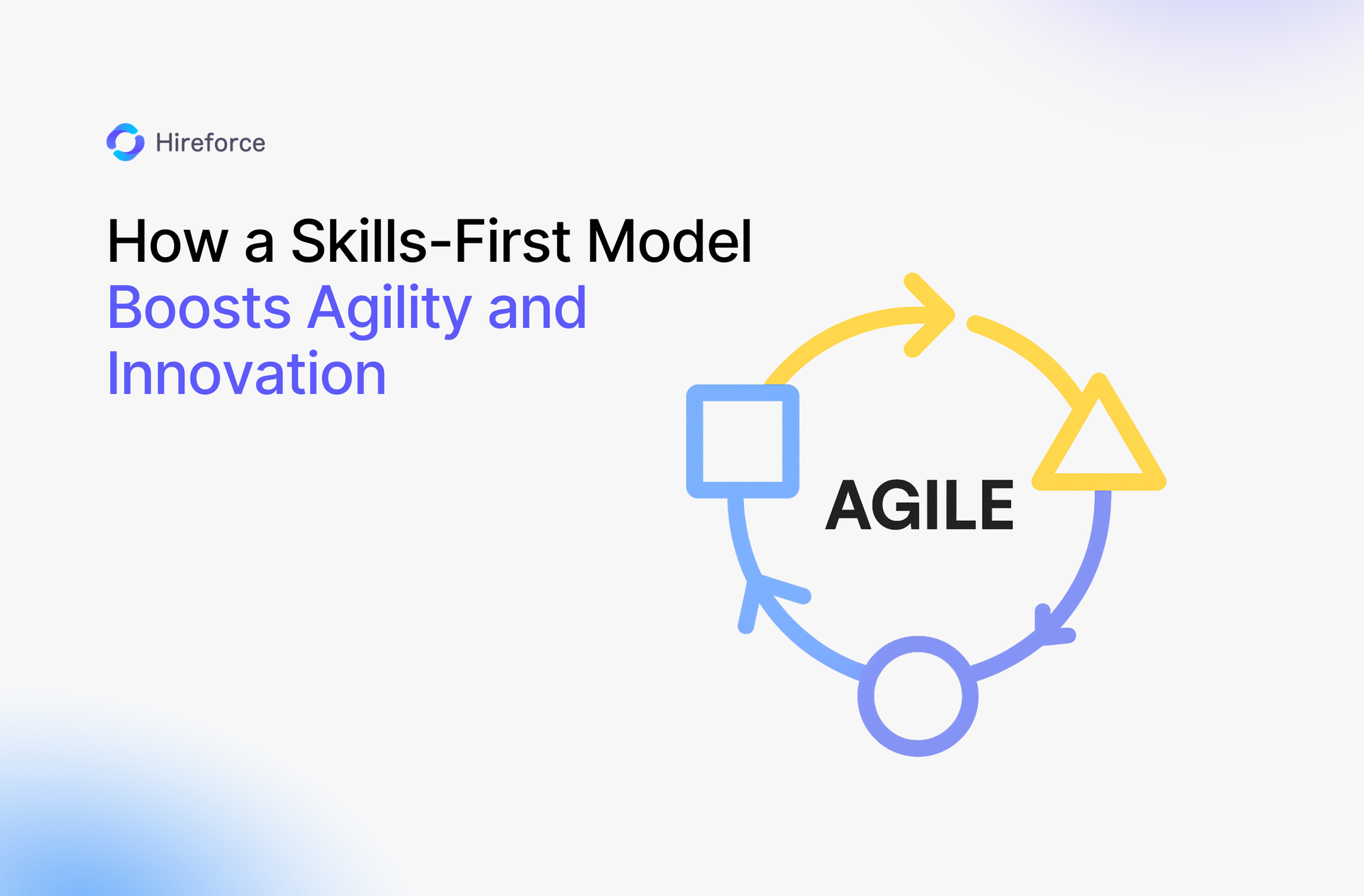The most valuable, adaptable, and readily available talent often resides within your existing workforce.
However, enabling internal mobility through traditional approaches based on tenure or past job titles often fails to identify this potential.
A skills-first strategy provides the key, enabling organizations to dynamically understand employee capabilities and redeploy internal talent with unprecedented speed and precision, boosting agility and retention.
Why Internal Mobility Is the Future of Workforce Agility
Relying heavily on external hiring during periods of rapid transformation presents significant limitations. External recruitment is often slow, costly, and carries the risk of poor cultural fit or longer ramp-up times. Furthermore, current practices that rely on internal progression paths based on resumes and tenure may reduce organizational adaptability, overlooking employees with complementary skills or high potential for roles outside their current position. A skills-first approach directly addresses these issues, shifting the focus to demonstrable capabilities.
For more context on how skills enhance adaptability:

The Role of Skills Inventories in Agile Talent Redeployment
Limitations of Traditional Job-Based Talent Management
- Resource Constraints: Employees often assume additional responsibilities without corresponding updates to their official job titles, resulting in inaccuracies.
- Temporary Assignments: Temporary role expansions or interim roles are often not accurately captured by fixed titles.
- Misalignment of Expectations: Differences between HR-defined roles and actual managerial assignments create confusion.
- Title Inflation: Organizations may inflate titles to attract talent or boost morale, diluting clarity around actual capabilities.
Enable Agile Talent Redeployment Through Skill Mapping
Dynamic skills mapping offers a solution by providing granular insights into each employee's skills, certifications, experiences, and professional aspirations. Advanced technology, including AI and machine learning, facilitates continuous updates and accurate verification of these skills.
According to Deloitte Insights, "Organizations that implement dynamic skills inventories see significantly improved speed in identifying internal candidates for new opportunities, directly contributing to enhanced organizational agility.”"

From Insight to Action
The strategic shift from static titles to dynamic skill profiles enables proactive workforce planning and rapid internal talent redeployment. Real-time skills data allows organizations to:
- Quickly identify internal candidates suitable for lateral or vertical career moves.
- Assemble cross-functional project teams based on precise skill requirements rather than broad role definitions.
- Rapidly address unexpected operational needs with minimal disruption.
Achieving these outcomes requires a well-structured skills taxonomy, ensuring consistent recognition of skills and facilitating seamless internal talent matching across organizational boundaries.
Common Challenges
Data Fragmentation and Siloed HR Systems
Skills data often resides in disparate systems (HRIS, ATS, LXP), hindering a unified view. The solution lies in establishing a centralized skills database or leveraging platforms with robust API integrations that can consolidate skills information from various sources.
Mindset Shift in Managers and Leadership
Managers accustomed to evaluating talent based on credentials or tenure may resist internal moves or skills-based assessments. Overcoming this requires dedicated training for managers on evaluating capabilities, emphasizing the strategic importance of internal mobility for business continuity, and showcasing success stories of internal redeployment driven by skills. Leadership must champion this shift consistently.
First Steps to Unlocking Internal Talent
Organizations can begin fostering skills-driven internal mobility even before implementing large-scale technology solutions. Consider these initial actions:
- Audit Skills, Not Just Org Charts: Conduct a pilot skills inventory within a specific department or for a critical role group. Utilize self-assessments, manager validations, AI-parsing tools, or formal skills assessments to get an initial understanding of capabilities beyond job titles.
- Introduce an Internal Opportunity Hub: Create a simple, centralized location (such as an internal webpage or shared document) to transparently showcase open lateral roles, project opportunities, or short-term assignments. Encourage employees to explore these opportunities and express interest, fostering a culture of internal movement.
Summary
Companies can respond more quickly to change, enhance employee retention, and achieve greater cost efficiency by focusing on capabilities, leveraging skills inventories, and enabling movement through internal talent marketplaces. While challenges exist, the strategic benefits make embracing skills-first internal mobility a critical priority for forward-looking talent leaders.
About Hireforce
Originally built as a smart ATS and CRM (Customer Relationship Management) solution for Companies and Recruitment Agencies, we're now heading toward building an enterprise-grade AI Talent Intelligence Platform designed to future-proof businesses and career owners. We empower enterprises, SMBs, recruitment agencies, and individual talents through strategic talent insights and skill-first solutions. We integrate internal workforce data with real-time external market intelligence, enabling smarter, faster, and more confident talent decisions.





